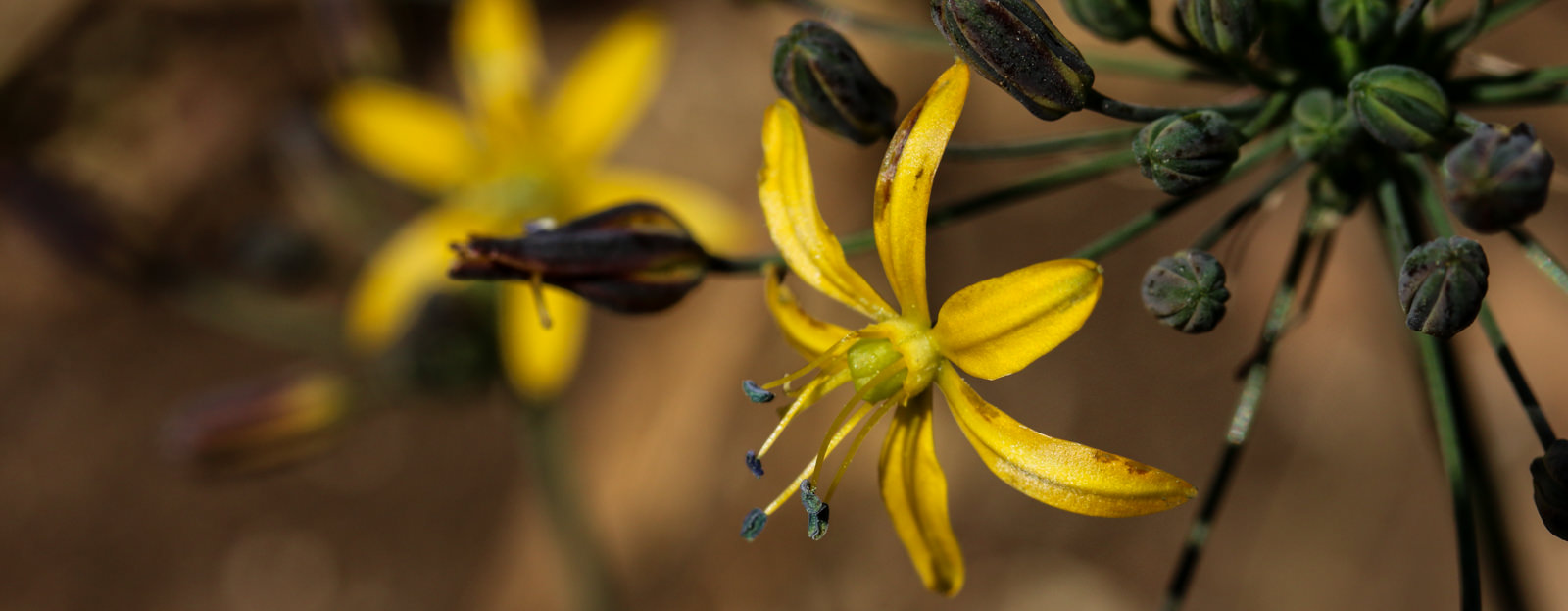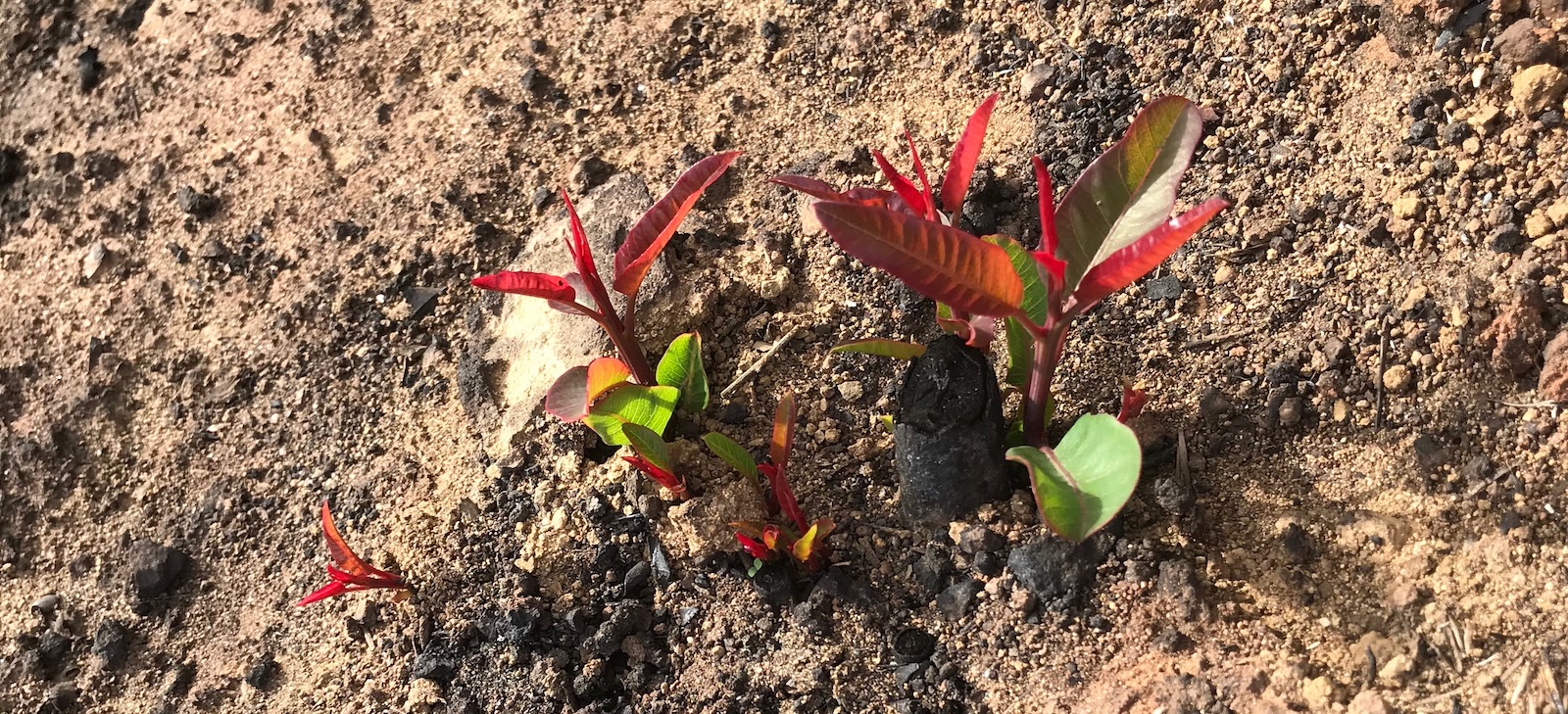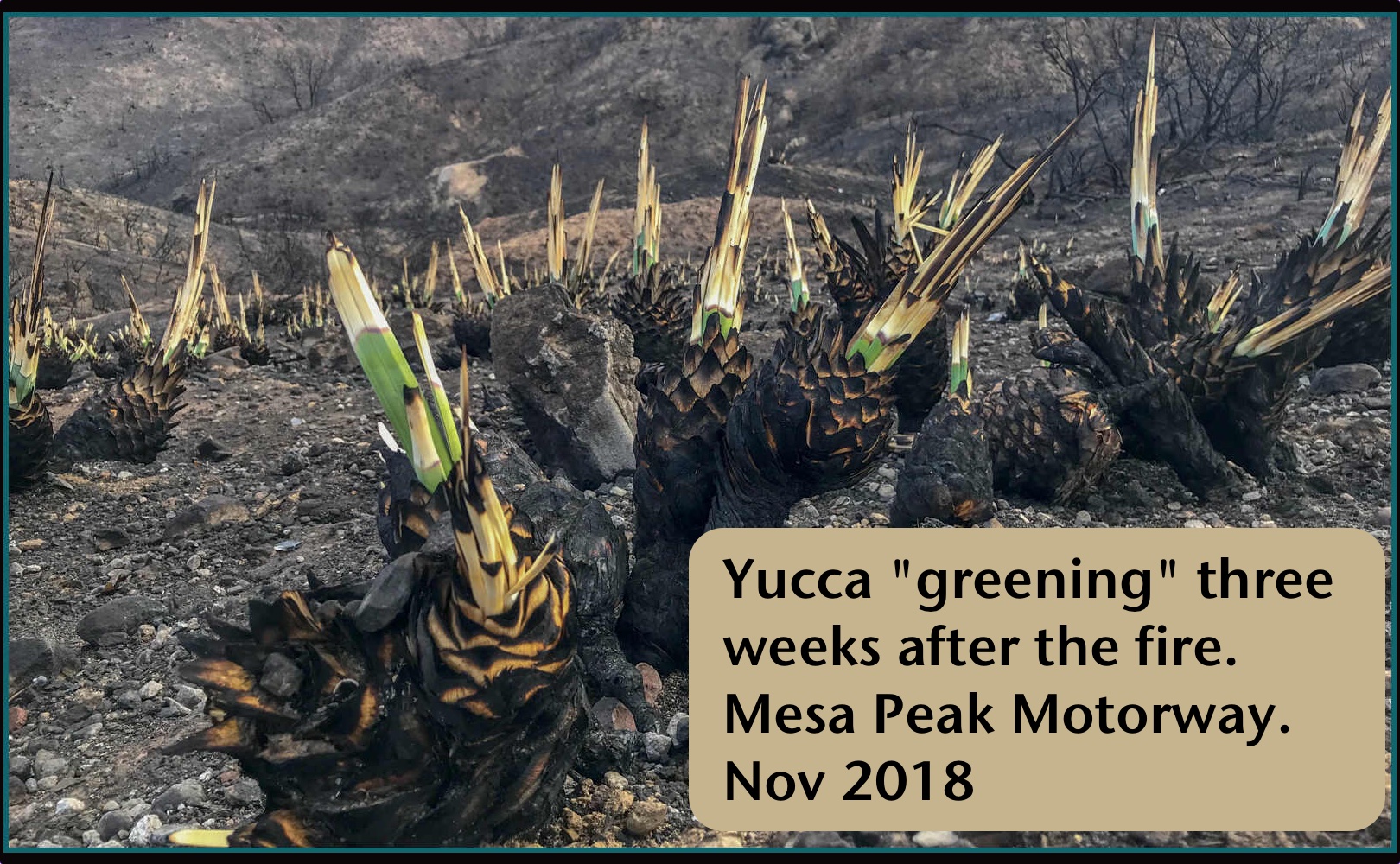
The devastating Woolsey Fire of 2018 burned hot and fast as it made its way from one side of the Santa Monica Mountains to the other. As a local hiker, I wondered how our mountains would respond. If the past is a guide for the future, the race to reclaim the scorched earth began as the fire was being extinguished. Landscapes previously covered with nearly impenetrable chaparral were reset to a blank canvas. Plant diversity will be more pronounced as seeds of the previous season and seeds long dormant burst out of the ground. This initial wave of new growth fades after a season or two. Seeds from these early "fire follower" flowers will comprise the newly replenished seed bank - ready and waiting for the next fire. Competition with these fast-growing plants will come from the slower growing shrubs that eventually form the next generation of impenetrable chaparral.

Even immediately after the fire, we observed that the landscape was not entirely a moonscape. It had reduced areas to ash and yet a few yards away flowers remained in bloom. Fire is capricious - an incinerated forest of oak trees here and only slightly burned chaparral over there. Differences in fire intensity created this unique mosaic.

The first signs of recovery were immediate: Yuccas and laurel sumac poking out from the ash-covered ground. Wild cucumber's white blossoms appeared with the first rains. Now, approximately three months after the fire, it has become clear that a recovery is in process. After the onset of the rainy season, the hillsides are green with fast growing non-native grasses and mustard. Fire is but a speed bump to these invasive plants. After the rain stops, these green hillsides will become the tan color we know to expect. Contrast that with slower growing chaparral, an evergreen plant that can live 50 years or more. Recovery begins quickly enough but takes several years.


The plants that can re-sprout staked out the ground around their crown/root systems. Where there was once a single trunk, many shoots now grow upward. These plants have advantages over seed-germinated plants: existing root systems and dormant buds already in place. The odds against any seed germinating and growing to maturity are enormous compared to its chances of sprouting from an existing stump. Toyon and scrub oak are two examples of this.

Plants "banked" their seeds in the soil in the years after the last fire and waited for fire to create space for them. A subset of these plants reveals itself only after fire and becomes dormant in subsequent years. The seeds of these short-lived "annuals" may have hard coatings that the fire cracks or insulation that allows them to survive the heat. The fire/heat breaks through these protective barriers (which prevented hydration) and allows germination to take place.

Chemicals in the fire's smoke activate other seeds. The nitrogen compounds in the smoke signal some seeds that "the aboveground biomass" has burned, and it is time to germinate.

Some plants both sprout and reseed after a fire. Sprouting from a stump is more efficient than germination from seed for many plants. Seeds become a backup solution should the root of the plant burn. Manzanita and chamise use this strategy—akin to having a low-cost insurance plan.

Plants in the chaparral community have adapted to survive and recover after fire. Rain fall matters in recovery - our current protracted drought could prolong the time required. Despite adaptation strategies, large numbers of oaks and red shank shrubs are not likely to return within our lifetimes due to the changing climate.

Before man's intervention, wild fires used to occur naturally every 30 to 100 years. Chaparral rebounds quickly with fires of this frequency. Trouble occurs when an area burns too often (three to ten years) because this consumes the seed banks. Non-native grasses and other non-native species often further their spread during this time. Invasive plants (mainly grasses) are good at burning while forcing many native plants out which can increase the risk of future fires. Our chaparral environment is diverse and has adapted to a fire cycle. Some plants you observe this season may this not be back during your lifetime. Waiting for the next fire, these plants will remain dormant as seeds, ready to spring into action when signaled.

This year is shaping up to be a spectacular year for flowers - make time to enjoy their beauty and observe some of these adaptations!


Excutive Summary: Plant species in Chaparral environments respond to fire with specific strategies which allow them to survive fire. Plants are commonly classified according to whether they survive fire and resprout or whether they are killed by fire and regenerate from seed. A number of plants can grow from seed and/or sprout depending on local conditions.
